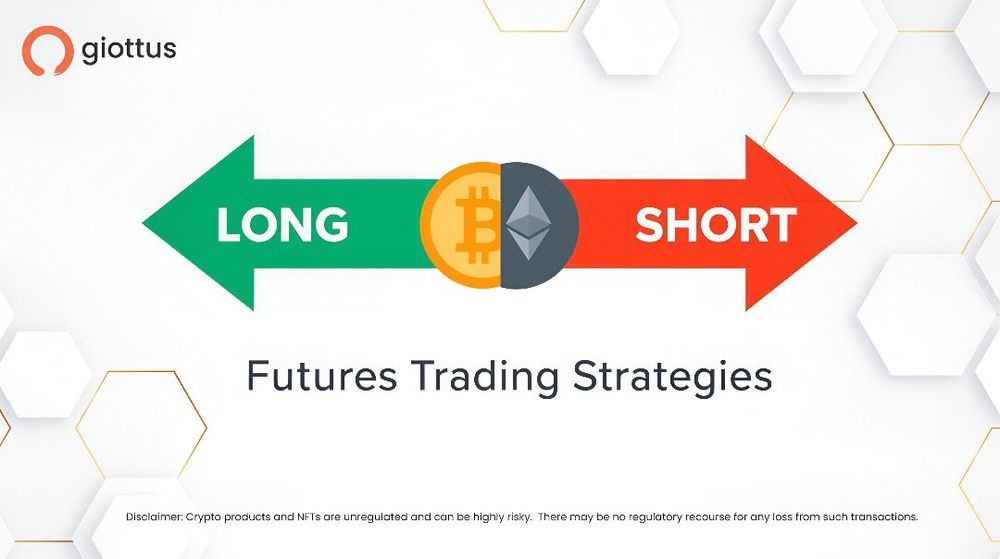Top 3 Futures Trading Strategies Every Beginner Should Know

Crypto trading isn’t limited to long-term investing. Futures markets give traders more control, faster reactions, and multiple ways to earn, regardless of whether prices go up or down.
Futures trading rewards preparation. Random trades often turn into random losses. With the right strategy, even beginners can navigate volatility, limit mistakes, and find consistent opportunities.
This guide explores three reliable strategies for new futures traders. Each one offers a clear entry plan, a practical example, and insights to help you trade with conviction, not guesswork.
1. Trend Following Strategy
Best for: Riding momentum with clarity and confidence
Core Idea: Trade in the same direction as the prevailing trend
Markets tend to move in clear trends—upward or downward. Trend following helps you enter positions that move with the dominant force, not against it. Traders use tools like moving averages, trendlines, and momentum indicators to confirm direction.
How It Works
Use a combination of indicators to determine trend strength. A simple example is the 50-day moving average crossing above the 200-day, which signals upward momentum. If you're looking to short the asset, watch for the opposite.
For example, Bitcoin steadily rises from ₹20,00,000 to ₹23,00,000. A short-term moving average crosses above a longer-term one. You enter a long futures trade at ₹23,50,000. The trend continues, and BTC reaches ₹25,00,000. You exit and lock in your gains.
Pros
- Easy to follow with basic chart tools
- Encourages discipline and reduces noise
- Works across timeframes
Cons
- Slower signals may delay entries
- Ineffective in choppy or sideways markets
- Vulnerable to fakeouts during trend reversals
2. Breakout Trading Strategy
Best for: Capturing strong moves after periods of price compression
Core Idea: Enter when price escapes a clearly defined range
Markets often consolidate before making sharp moves. Breakout trading focuses on those moments when the price breaks past resistance or below support. Volume often confirms the breakout.
How It Works
Identify a tight price range. Wait for the breakout. Enter in the direction of the move once volume picks up and price holds above or below the range.
For example, Ethereum trades between ₹1,80,000 and ₹1,85,000 for several sessions. One morning, ETH surges above ₹1,85,000 with strong volume. You enter a long futures trade at ₹1,86,000. Over the next few days, ETH reaches ₹1,92,000. You exit with a solid return.
Pros
- Fast entries during strong moves
- Clear support and resistance markers
- Useful in volatile or news-driven markets
Cons
- False breakouts are common without volume confirmation
- Requires fast execution
- Not ideal in low-volume conditions
3. Pullback Trading Strategy
Best for: Buying dips or selling rallies within an active trend
Core Idea: Wait for a temporary pause in trend direction, then enter at a better price
Traders don’t always need to chase price action. Pullbacks create opportunities to enter trades at a discount within a larger trend. Tools like Fibonacci retracements, RSI, or simple support levels help identify these pauses.
How It Works
After spotting a trend, wait for the price to pull back. Look for signs of exhaustion in the opposite direction (e.g., RSI resets or bounce off key support). Enter once the pullback shows signs of ending.
For example, Solana rallies from ₹8,000 to ₹9,000. It then dips to ₹8,700. You see this as a pullback, not a reversal. You enter a long futures trade at ₹8,750. Solana climbs to ₹9,300, and you take profit.
Pros
- More favorable entry price
- Reduces emotional buying at highs or selling at lows
- Often pairs well with trend-following setups
Cons
- Requires patience and timing
- Not every pullback resumes the trend
- Works best with supporting indicators
Risk Management for All Strategies
A strong strategy means little without effective risk controls. These rules apply to every trader, especially when using leverage:
- Start with low leverage (2x–3x). Focus on learning the system, not multiplying risk.
- Always use stop-losses. Set them before entering the trade and stick to them.
- Avoid oversized positions. Protect your capital by spreading risk.
- Track every trade. Logging entries, exits, and reasoning builds skill over time.
- Understand funding fees and taxes.
Futures trading opens the door to opportunity. You can go long, go short, and apply leverage—but none of that matters without a system.
Also read: Beginner’s Guide to Crypto Futures Trading: Everything You Need to Know
Start with what’s proven:
- Trend following keeps you aligned with market momentum.
- Breakout trading helps you catch explosive moves early.
- Pullback trading lets you enter trends at better prices.
Test each one. Use small position size and stay consistent. Over time, your edge will come from discipline, not prediction.
At Giottus, we’ve built our Futures Trading platform to support smart strategies with fast execution, INR support, and full compliance for Indian users. Whether you're trading Bitcoin, Ethereum, or altcoins, your strategy starts here.
Updated on: 8th December, 2025 5:19 PM
FAQ's
1. What are perpetual futures contracts in crypto trading?
Perpetual futures, often called "perps," are derivative contracts that allow traders to speculate on the price of crypto assets like Bitcoin or Ethereum without owning the actual asset. Unlike traditional futures contracts, perps have no expiration date, meaning you can hold a position as long as your account meets margin requirements.
2. How do perpetual futures differ from traditional futures?
Traditional futures have a fixed maturity date, requiring traders to settle or roll over their positions. Perpetual futures, however, can be held indefinitely, making them ideal for long-term strategies or short-term price speculation. The funding rate, a periodic fee exchanged between long and short position holders, ensures the contract price stays close to the underlying asset's spot price.